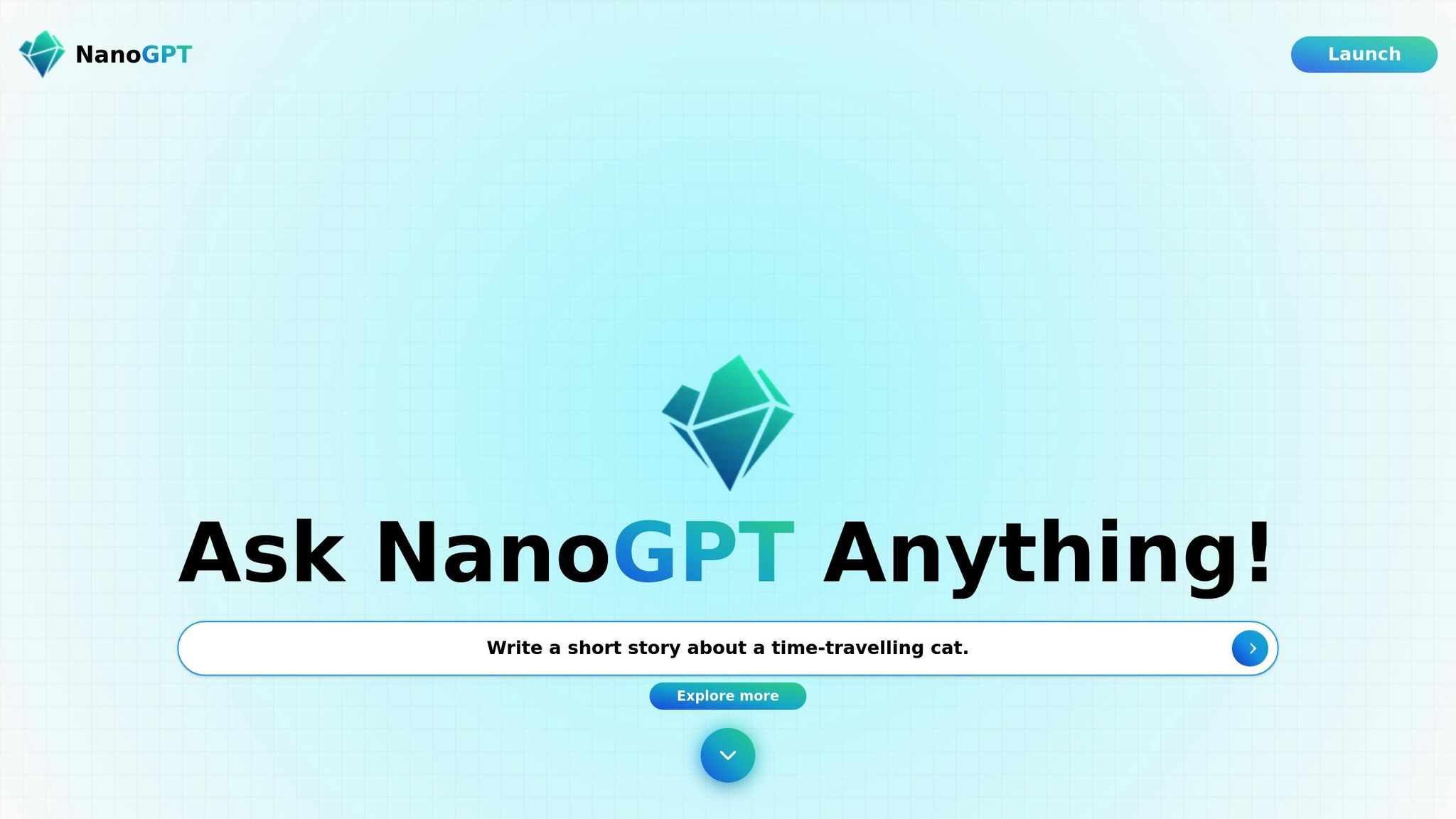Apr 1, 2025
AI models come with varying costs based on their type: pay-as-you-go, proprietary, or open-source. Here's a quick breakdown to help you decide which fits your needs:
Quick Comparison:
| Cost Factor | NanoGPT | Proprietary Models | Open-Source Models |
|---|---|---|---|
| Pricing | Pay-as-you-go ($0.10 min) | High upfront & recurring fees | Free but with setup costs |
| Data Storage | Local storage included | Additional investment | Separate infrastructure |
| Support | Managed service | Included but costly | Requires in-house team |
| Flexibility | Usage-based pricing | Limited by fixed costs | Self-managed |
Key Takeaway:
Choose NanoGPT for flexibility and low initial investment, proprietary models for performance with steady budgets, or open-source for full control if you have the resources.

NanoGPT uses a pay-as-you-go model, making it easier to manage costs without locking users into subscriptions. Here's a breakdown of how NanoGPT keeps expenses manageable:
NanoGPT requires a minimum balance of $0.10 to get started and offers instant access to multiple models. This approach allows users to:
The platform simplifies API integration with various development tools, helping reduce integration costs by:
This streamlined integration helps keep operational costs under control.
"We believe AI should be accessible to anyone. Therefore we enable you to only pay for what you use on NanoGPT, since a large part of the world does not have the possibility to pay for subscriptions."
NanoGPT's auto model feature picks the best AI model for specific queries, saving resources and reducing costs by:
George Coxon highlighted its ease of use and cost-effectiveness.
Additionally, the platform prioritizes privacy with local data storage, which not only enhances security but also lowers infrastructure costs.
| Cost Component | Benefit | Impact on Autonomous Systems |
|---|---|---|
| Pay-as-you-go Model | No upfront commitments | Flexible scaling based on usage |
| Auto Model Selection | Efficient resource usage | Lower operational overhead |
| Local Data Storage | Improved privacy | Reduced infrastructure expenses |
Proprietary AI models come with hefty costs, covering API fees, computational needs, integration, and ongoing maintenance. These factors can heavily impact ROI. Unlike NanoGPT's simplified approach, proprietary models bring both fixed and variable expenses to the table.
| Access Type | Cost Structure | Impact on Budget |
|---|---|---|
| Pay-per-use | Costs vary by usage volume | Scales well for irregular usage needs |
| Subscription | Fixed monthly/annual fee | Easier to budget for steady usage |
On top of API fees, hardware and deployment resources significantly contribute to the overall expense.
Running proprietary models demands:
Setting up and maintaining these models involves:
Despite the costs, these models can generate returns by:
Deploying open-source AI models in autonomous systems comes with various expenses. These costs fall into four main categories: infrastructure, development, operations, and hidden costs.
Setting up the right infrastructure is a major expense for open-source models:
| Resource Type | Typical Monthly Cost | Notes |
|---|---|---|
| Cloud Computing | $2,000 - $15,000 | Costs vary by workload and provider |
| Storage | $500 - $3,000 | Depends on the volume of data |
| Network Bandwidth | $300 - $1,500 | Based on data transfer requirements |
Development and training add another layer of costs:
Running open-source models involves ongoing operational expenses. These include salaries for experts like:
Operational tasks include:
Maintenance tasks, such as updating models, applying security patches, managing versions, and improving performance, also contribute to costs.
Beyond the obvious, there are hidden expenses like:
While open-source models are free to use, the total investment needed can rival proprietary solutions. Organizations should carefully assess their resources and expertise before opting for open-source implementations.
This section compares the cost structures of NanoGPT, proprietary models, and open-source models for autonomous systems.
Here's a breakdown of the main cost factors:
| Cost Factor | NanoGPT | Proprietary Models | Open-Source Models |
|---|---|---|---|
| Pricing | Pay-as-you-go with a $0.10 minimum | High upfront costs and recurring fees | Free to access but with deployment costs |
| Data Storage | Local storage included; external storage optional | Requires additional storage investment | Needs separate infrastructure |
| Support | Managed service, reducing internal support needs | Included but adds to overall costs | Requires in-house expertise |
| Operational Flexibility | Usage-based pricing for greater flexibility | Limited flexibility due to fixed costs | Depends on self-management capabilities |
Each model has its own trade-offs, so choosing the right one depends on your system's needs and budget. Proprietary models come with fixed fees and licensing costs, while open-source models often require extra resources for deployment and maintenance. NanoGPT stands out with its pay-as-you-go pricing and included local storage, offering a more cost-efficient and accessible option.
After analyzing the costs of AI models for autonomous systems, here’s how you can align your AI model choice with your needs and budget:
Here’s a quick summary of the recommended strategies based on organization size:
| Organization Size | Recommended Approach | Key Benefits |
|---|---|---|
| Small/Startup | Pay-as-you-go with minimal initial investment | Better cost control and flexibility |
| Medium | Hybrid approach with flexible model selection | A balance of performance and cost |
| Enterprise | Multi-model access with usage-based scaling | Increased efficiency and cost savings |